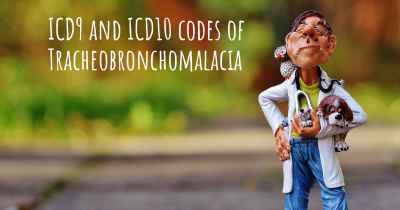What is the life expectancy of someone with Tracheobronchomalacia?
Life expectancy of people with Tracheobronchomalacia and recent progresses and researches in Tracheobronchomalacia

Tracheobronchomalacia is a condition characterized by weakened cartilage in the trachea and bronchi, leading to airway collapse and breathing difficulties. The life expectancy of individuals with tracheobronchomalacia can vary depending on the severity of the condition and the presence of other underlying health issues. While it is challenging to provide an exact prognosis, early diagnosis and appropriate management can significantly improve the quality of life and potentially extend the lifespan of affected individuals. Treatment options may include medications, respiratory therapies, and in severe cases, surgical interventions. It is crucial for patients to work closely with healthcare professionals to develop a personalized care plan and receive ongoing support.
Tracheobronchomalacia (TBM) is a rare condition characterized by the weakening or collapse of the trachea (windpipe) and bronchi (airways). This structural abnormality can lead to various respiratory symptoms and complications. While it is important to understand the impact of TBM on an individual's quality of life, predicting life expectancy can be challenging due to the variability of the condition and its underlying causes.
The severity of TBM can vary significantly among individuals, ranging from mild to severe cases. Some individuals may experience only mild symptoms and have a relatively normal life expectancy, while others with more severe forms of TBM may face greater challenges and potential complications.
Causes and Risk Factors:
TBM can be either congenital (present at birth) or acquired later in life. Congenital TBM is often associated with other congenital abnormalities, such as tracheoesophageal fistula or congenital heart defects. Acquired TBM can result from various factors, including prolonged intubation, trauma, chronic inflammation, or certain connective tissue disorders.
Symptoms and Complications:
The symptoms of TBM can vary depending on the severity of the condition. Common symptoms include chronic cough, wheezing, shortness of breath, recurrent respiratory infections, and difficulty breathing during exertion. In severe cases, TBM can lead to respiratory distress, cyanosis (bluish discoloration of the skin), and even respiratory failure.
Complications associated with TBM can further impact an individual's prognosis. These complications may include recurrent pneumonia, chronic lung disease, and impaired growth and development in infants and children.
Diagnosis and Treatment:
Diagnosing TBM typically involves a combination of medical history evaluation, physical examination, and diagnostic tests. These tests may include bronchoscopy, which allows direct visualization of the airways, and dynamic imaging studies, such as computed tomography (CT) or fluoroscopy, to assess airway collapse during breathing.
Treatment options for TBM aim to alleviate symptoms, improve airway function, and manage complications. The approach may vary depending on the severity of the condition and individual patient factors. Conservative measures, such as respiratory therapy, bronchodilators, and airway clearance techniques, can help manage symptoms in mild cases. In more severe cases, surgical interventions like tracheostomy or airway stenting may be considered to provide structural support and improve airflow.
Prognosis and Life Expectancy:
It is important to note that predicting life expectancy for individuals with TBM is challenging due to the wide variability in the severity of the condition and its underlying causes. The prognosis can vary significantly from person to person.
In mild cases of TBM, where symptoms are manageable and complications are minimal, individuals can have a relatively normal life expectancy. With appropriate management and treatment, they can lead fulfilling lives with minimal impact on their overall health and longevity.
However, in severe cases of TBM with significant airway collapse and associated complications, the prognosis may be more guarded. These individuals may be at higher risk of respiratory infections, respiratory failure, and other respiratory-related complications, which can impact their overall health and life expectancy.
Conclusion:
Tracheobronchomalacia is a complex condition that can vary in severity and impact from person to person. While mild cases of TBM may have minimal impact on life expectancy, severe cases with significant airway collapse and complications can pose greater challenges. It is crucial for individuals with TBM to work closely with healthcare professionals to manage symptoms, address complications, and optimize their overall respiratory health.
Posted Jul 30, 2017 by KimG 1200








